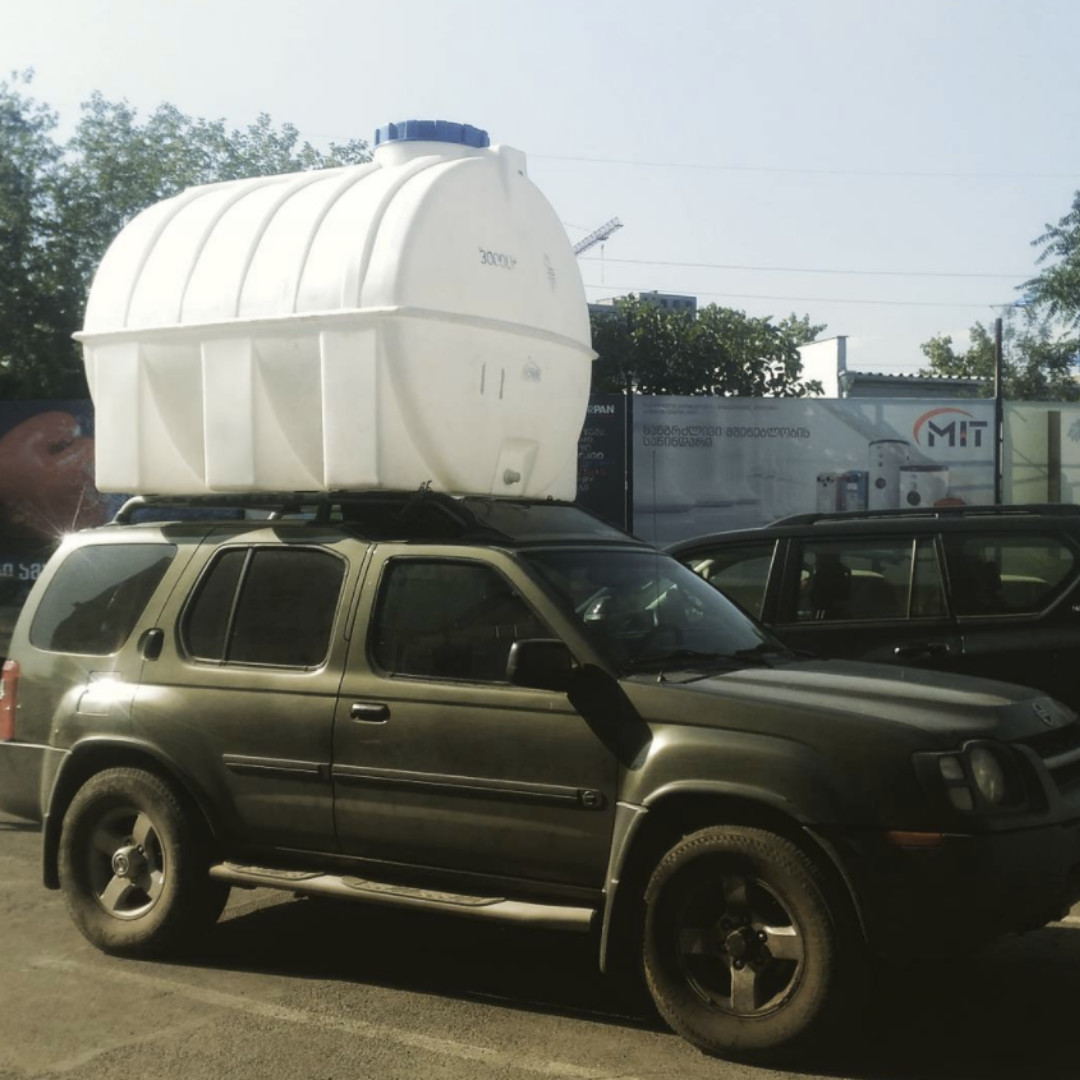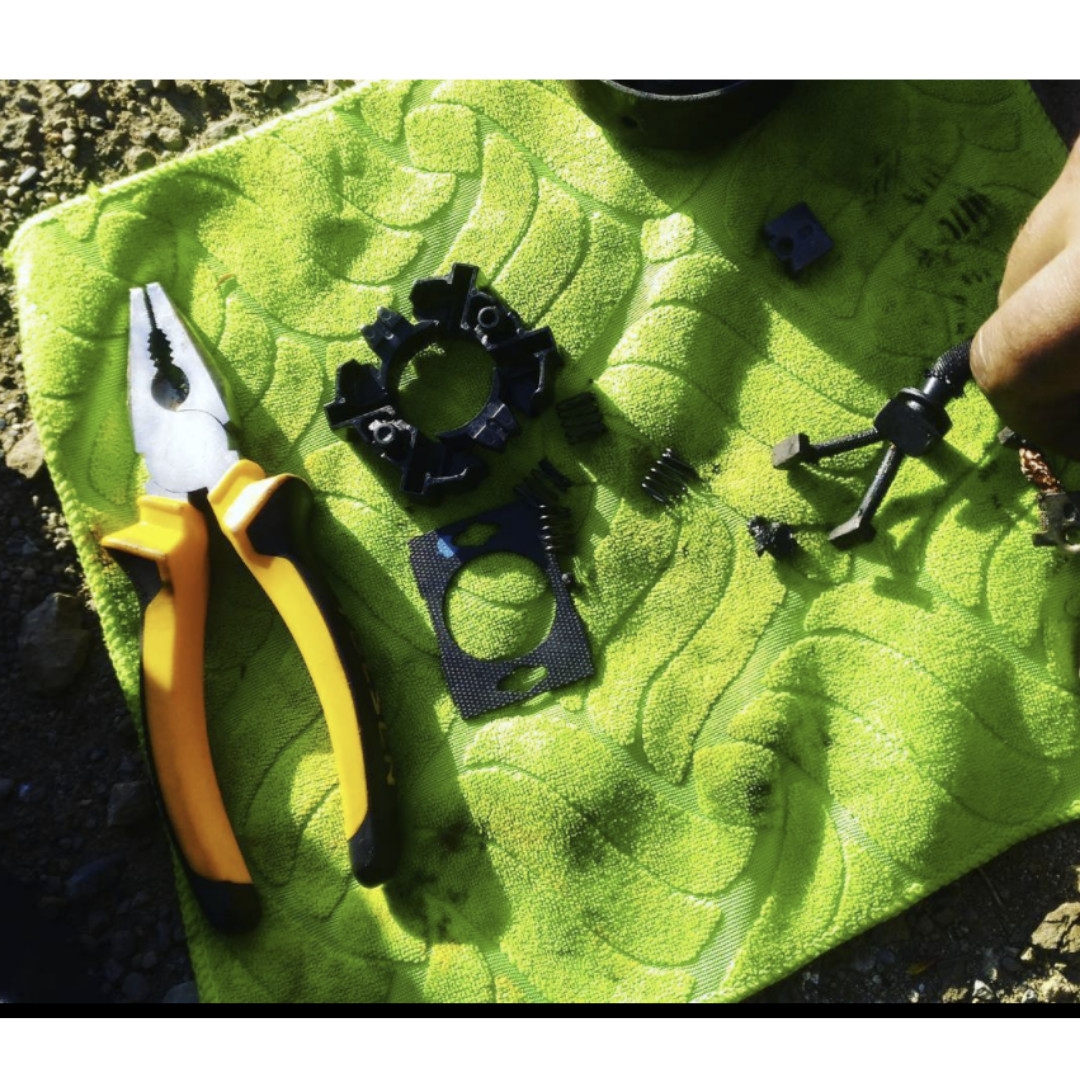OMG I was laughing out loud reading this @matthias not just because the examples you gave here and above are not only (to some extend) relatable but also because the difference between the EU and Georgia 
As you know I’ve lived most of my adult life in Georgia and so I have never been a car owner myself in the EU, tho I have been here for a good decade.
Especially now that we are living quite remote, a car is a necessity - there isn’t any public transportation, so your only other option would be to hitch hike down, waiting for a car to come along and take you down or up the mountain. We often take hitch hikers from down to the next village over, they only recently paved the road between our two villages.

Our road, a dead end road connecting to the main road, isn’t paved. The only two roads paved are the main roads, with one of them paid for by the local government and the other by the community. For some reason, instead of the more expensive four wheel drives that can handle this kind of environment better, most cars are 20 year old sedans, with Mercedes being a local fav.
Now, many cars on the road here are cars that have been written off in the EU or in the US. Funny side note: my father-in-law owns a car import company from the US. They buy - or private people and dealers through them - cars from the states with significant electronic and/or mechanical damages/issues, fix them up, and resell them regionally (incl to Armenia and Azerbaijan).
You’d think that would mean there’s a lot of knowledge and car parts. Well, yes and no. If you own a “popular” brand (Mercedes, BMW or Toyota) there is more knowledge and there are parts. Try finding a replacement part for a Volvo, Citroen or Mazda, good luck…
But no matter the brand, you yourself will still be stuck for a day or more looking for parts yourself asking around who may have x part for 200X car in unmarked garages off highways, with some mechanics taking you to another unmarked garage in a residential area locked with a large lock, car parts everywhere, but yes, going through the chaos that find that tiny little specific part eventually.
Now with all of these particularities combined, we (my partner and I) had to become creative and inventive as car owners. Here are some of my fav anecdotes:
- Our second car (I wont even talk about the first I owned, a Mitsubishi Pajero, I will never get one of those again) was a 2003 Nissan XTerra that we had bought through my father-in-law’s company. There was one issue: the check engine light was almost always on. But they couldn’t find anything wrong. The solution: just ignore.
Well, of course there was something wrong. Or many things.
One day, our car had troubles starting. We had it checked, but they couldn’t find anything. Next time it happened we were up at our house. Towing would be incredibly expensive. So, we went online and tried figuring out if we could fix it. Turns out, with the specific make and model (and some other cars as well), hitting the starter with a hammer as you attempt to start will help. AND IT DID.

The third time it happened we were yet again at our house. This time, the hammer did not solve it. So we decided to take the starter out of the car ourselves, completely disassemble it, trying to find the issue (which we did) and reassemble it.

- My father-in-law felt bad about the troubles we were having with the car and decided to give us the car of his father (as he wasn’t using it), a 2004 Nissan Xterra. Within a month of owning it, the transmission broke. It cost us $2000 to fix it as it’s such a specific job and you need specialized expensive Nissan-rated tools for it. But, in the states, or the EU it would’ve cost us over $10,000 likely. And it would’ve likely been written off.
- Now a couple of years later we also started using my grandmother-in-law’s city car, a 2006 Hyundai with no luxuries accept for the AC. A manual car, not automatic as our Xterras had been. And boy, this car did great. Untill a couple of months ago. A weird sound started coming out of the engine when driving, especially with AC on. A temp solution was turning the car on and off, and the sound would be gone. We bickered about the issue. I said it was AC-related, my partner thought it was a loose bolt. Two days ago the engine died while my partner was driving away from the house. He and a neighbor figured out that it was indeed the AC’s compressor. They disconnected the belt: the sound is gone, the car drives smoothly, and is much more economical. We don’t have a working AC, but that’s ok!
As you can read from my experiences, I related a lot with what you wrote about issues and possible solutions. From reducing “luxuries”, to pushing for interchangeable car parts across brands and models, and learning from repairs (the reason I never want a Mitshubishi Pajero again is that the car constantly needed a specific fixing, I forgot what it was as it was over a decade ago, which was a known issue for that specific type of car…), to constant evolution - I’ll explain last part below.
Last winter/spring, our beloved 2004 Xterra died. Well, the engine did. The only option was to pay yet again $2000 to fix it/replace it. And we decided to sell the car to a mechanic instead, who was planning to use it for its parts.
So, we have been driving our tiny city car on unpaved mountain roads. It was doing extremely well, even on ice and in the snow, we had this winter. Until it started snowing three weeks ago and didn’t stop.

My father-in-law, a good man, offered to get us a new car that can handle the kind of environment we sometimes find ourselves in (this kind of snow we are seeing right now is a rarity, but with climate change, who knows…).
And this brings me to your point of constant evolution and not fast fashion because the model we are eyeing (a Toyota 4runner) has had the same engine model for over a decade, which is a rarity in car design. The reason: it’s a good reliable engine, why change something that is good? Most cars change engine design every couple of years.
Another reason we’re eyeing the model is due to the easiness to fix something. Many of the modern cars we see today have everything so cramped into the engine base that if you’d want to fix something you’d have to remove the engine by hauling it out completely (like with the newer Subarus). Most Toyotas make it easier for DIY at-home repairs.
We haven’t found “the one” yet, because as I mentioned earlier most cars here have been in accidents of some kind before being fixed up and you don’t want to accidentally lose a wheel breaking the chassis going over a bump - we check the VIN number of any car we’re interested in to see previous damages and fix-ups to see how crucial the damages were and how reliably it could have been fixed. There’s one car that will be fixed up that week that seems to be fitting our needs and wasn’t damaged that badly, so fingers crossed we’ll be able to get out of this snow soon ;).